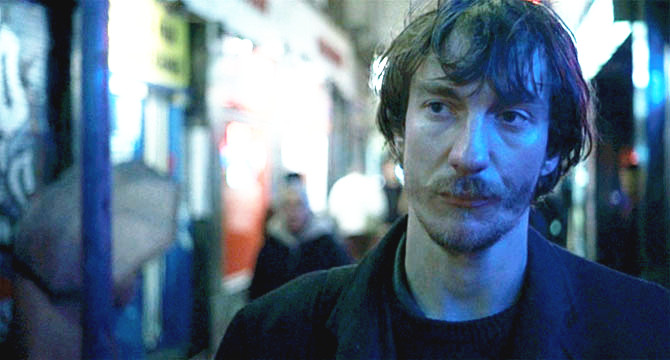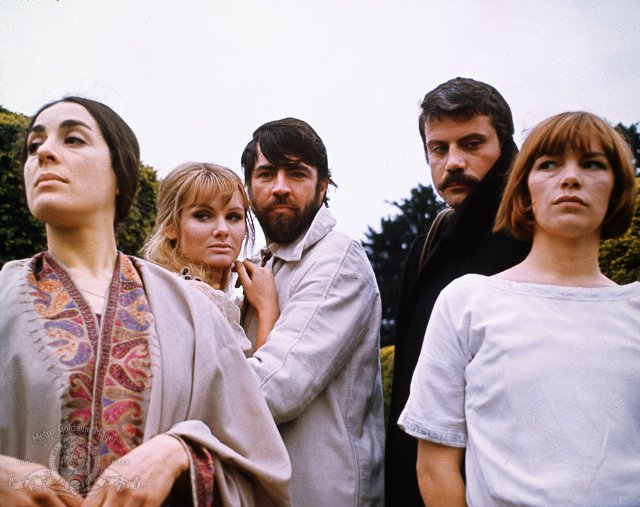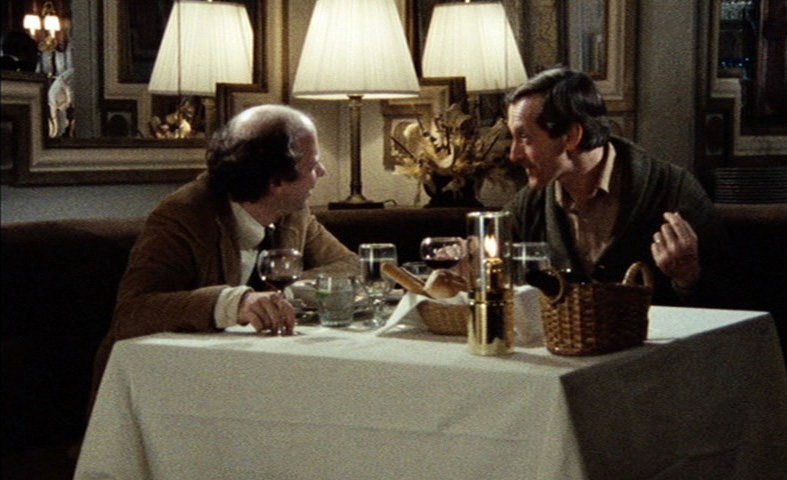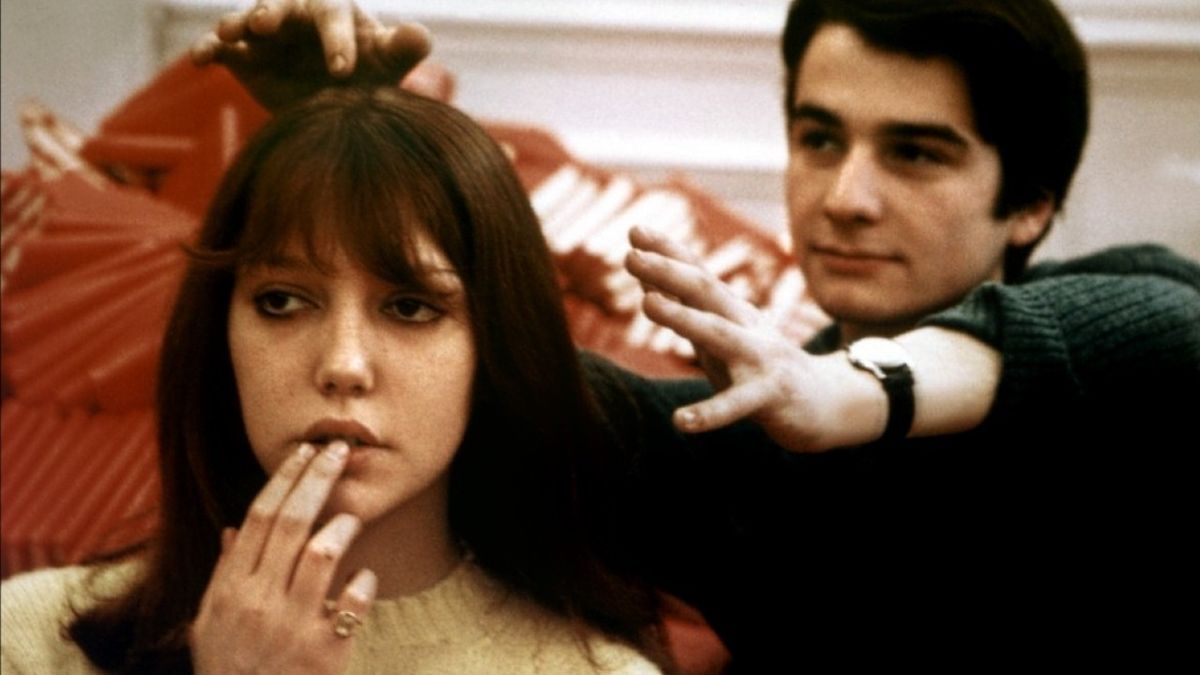5. Persona (1966)

Who would ever perceive Ingmar Bergman’s films as realities? Who could possibly pay no mind to his both scented and misty dream-like voyages of thought? Being one of the greatest film directors of all-time, Bergman hides uncountable words into a frame and draws a landscape of content through dialogue— this is exactly what one experiences in his 1966 “Persona,” a place where silence is answered with one-thousand words.
Elisabeth Vogler is the story’s hurt and consciously hushed heroine. She is an actress, a physically healthy artist whose wounded soul has decided not to speak again. In the role of nursing her is placed Alma, a dedicated caretaker that fills every void of time trying to recover Elisabeth’s soul and mind back from the abyss she’s lying in. As if collecting the most precious distillation of a hard effort, Alma will get an answer in the end.
“Persona” can be observed by many different points of view, as frequently happens with art pieces. Its textures and shades are many, rough and dark. The psych synthesis of Elisabeth and Alma, as well as their complex and dynamic relationship, has been extensively studied and interpreted. Are they, though, actually two different persons? Or are both each other’s reflection? The fact that the word “alma” means “soul” in Spanish, perhaps is a tool leading toward the comprehension of this mysterious masterpiece. Nevertheless, in all of those words of Alma and in those few ones of Elisabeth, you can find all of its ingredients.
4. Naked (1993)

It’s raw and sad; it’s even persistent and explicit. But essentially, the constituent that attributes to Mike Leigh’s “Naked” its predominant quality is the existence of a very tender and very naked heart. Hovering over the misery of forgotten, ignored and marginalized creatures, this is a painfully honest narration of usual urban drama of our days.
Various forms of solitude, alienation, and self-destruction are discussed here in a direct and relentless depiction. All of the story’s main characters are tortured and reclusive in such a familiar and ordinary way that it’s almost unbearable trying to understand them. They’re made by real materials that give them the texture of people one meets in the streets every day. Leigh effortlessly proves that contact can cause just pain if misused and that a pair of empty eyes can be so full of misery.
In this spinning maelstrom of vain existence, one character is placed in the middle of it so as to indicate an escape getaway. Like the rest, Johnny is alone and destructive. His mind, though, is larger than any form of life around him. His rational is developed in the process of numerous conversations he does with other people, giving answer in every painful question emerging in the picture’s decaying field of emotions.
Johnny’s words make all that sufferance bearable. His philosophy about life is summarized in the film’s last scene. He may be crippled and barely walk, but he still goes on. “Naked” deserves to be loved for its sadness, as it deserves to be loved for its final optimism. This reflection of our world’s image is not really that dark…
3. Women in Love (1969)

The title appears to be more than specific and clear, but, actually, this film is not about women in love. It has to do with a lot more than that. Love, sexuality, friendship, and existentialism are just some of the threads that interlace, providing this colorful tapestry of intellect and emotion that it is “Women in Love.”
Ken Russell was both an audacious and insightful filmmaker. His 1969 masterpiece “Women in Love” occurred due to this rare combination of an artist’s character. It’s almost hard to believe that this piece was created back in the ’60s, since its enlightened approach to human relationships, insecurity and self-satisfaction blazes youthfully among his cinematic bourgeoisie.
A philosophized perspective on life is exposed in the very well-written characters, as well as on the carefully thought-out relationships developed between them. Nevertheless, dialogue is one of the picture’s advantages, constantly inflaming deep existential questions. Apt, intellectual and honest, the film’s dialogue content will hunt you for long.
2. My Dinner with Andre (1981)

Louis Malle’s “My Dinner with Andre” in its entirety perhaps comprises the most iconic dialogue in cinema history. What could make a dinner between two diverse old friends interesting? Diversity itself, as a spice in life’s meal, is enough. Since the two of them sit on that table, the viewer is carried away in one of the most interesting conversations they’ve ever attended.
Time is experience and change. Time is life and life is time. Hence, meeting someone after a long time could lead in the introduction of someone completely new, full of experiences and stories to share. Wallace Shawn is supposed to in this position during his dinner with Andre Gregory. Being a conventional pragmatist, Wallace has reluctantly accepted to dine with Andre. Indeed, the narration of his friend’s extravagant adventures pulls the rug from under his feet. But progressive, it seems that the exposure of a surreal aspect of life keeps concentrated all of his mental strengths.
“My Dinner with Andre” is a walk through the earth while being sat in one table for two. Over the decades, cinema has proven its power to narrate and expose by means of optical interpretation. Here, Malle shows the powerful effect of a well-crafted dialogue as well.
1. La Chinoise (1967)

Watching Jean-Luc Godard’s cinema feels like putting back together one hundred transparent pieces of a broken glass. How can one be sure that there was even an entire piece glass? The task is heavy. But this inner personal process, during which is sometimes impossible to detect a guide, it’s almost inevitable to discover parts of your own self, and deal with thoughts you were trying to hide.
It’s the sense of dreaming, the sense of losing track of time that makes us love Godard’s cinematic wonders. His 1967 “La Chinoise” is just something different than that. Of course, its narrative structure still deviates from any conventional standard, but in a different way. The plot includes conversations of passionate politically active university students, citing their emotionally-driven, sometimes extreme political placement, impacted by the era’s socio-political events.
Fierce and specific, “La Chinoise” is Godard’s personal political manifest. It’s not necessary to agree with him in order to find this rainfall of thoughts interesting. All these conversations capture the political atmosphere of an era stained by significant political events; an era influential and iconic due to its revolutionary character, as in relation to political, so in relation to cultural aspects. Being an original piece of art coming from this era, “La Chinoise” deserves every cinephile’s close observation.